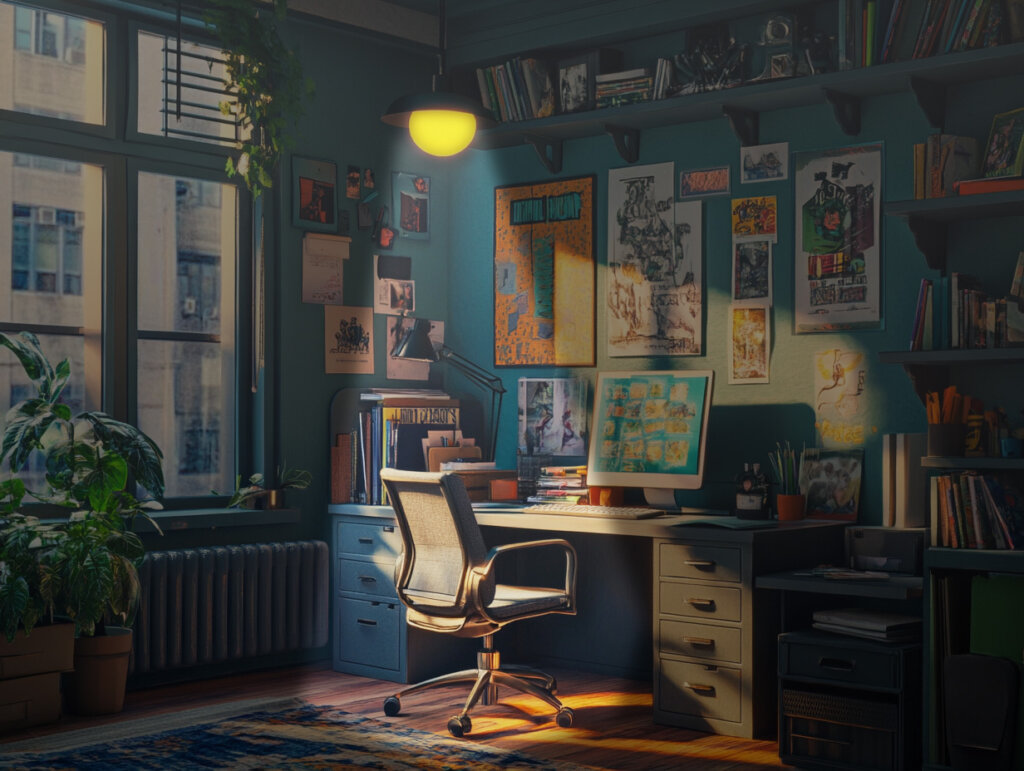Learning about how to become a UX designer and then landing a role in the industry are two entirely different things. In fact, a job posting for a “UX Designer” can have all sorts of meanings, not to mention individual interpretations.
Due to the newness of the field and the relative ignorance still surrounding the term “UX Designer,” different companies expect vastly different things from the same job title. When you’re considering a career in UX design, it’s easy to get confused about what you’re getting into. It’s not just you who might be confused–very often, the companies themselves don’t actually know what they need or want from their UX team or the UX process.
Why don’t job postings correspond with job roles?
User Experience Design is still a very new concept to many people, and hundreds of variations of what exactly UX is are all over the internet, only adding to the confusion for wannabe UXers and employers alike.
According to the International Organization of Standardization, the official definition of User Experience is:
“A person’s perceptions and responses resulting from the use and/or anticipated use of a product, system or service” (ISO 9241-210:2010, subsection 2.15)
When you sit down to look at the job ads for UX designers, be sure to study the small print to a get a true idea of what the job entails. This is because the term “UX Designer” is often used as an umbrella term for a number of roles in UX which are not concerned with the whole UX Design process. These roles are generally related in some way to that process, but do not oversee it from end to end. Depending on the immediate needs of the company, these roles might focus on just one aspect of the process, like User Testing or User Research.
A UX Designer should be concerned with the whole design process, rather than just one part
A UX Designer should be concerned with the whole design process, rather than just one part. However due to the relative newness of the field, the term “UX Designer” is often a blanket term used to cover anything UX related, which is where confusion arises.
If you find you are the first UX designer at a firm, you will probably discover that a large portion of your first few weeks will simply be explaining what UX design is, and how it will help the company reach its goals. You’ll likely need to explain how important your role is and why you’ve been hired (at least, that’s been the experience of many of my colleagues).
By making it very clear what your job is from the start, you will make implementing your processes later a lot easier than if you simply assume the team already knows what it is you’re doing there.
Here are 4 steps to defining your role in a new job:
- Explain your entire UX design process to the whole team, and who you will be working with at each stage.
- Speak to the development team about what they can expect from you, and when, and the value of your role to the product.
- Speak to management about what data you’ll provide at each stage
- Explain how you’ll be using that data to improve the product and how this will ultimately increase conversion and customer satisfaction.
What does it mean to be a UX designer?
Whether you land a job at a startup or a larger corporation, your role as UX designer will be directly involved in the process to make a product useful, usable and delightful for that company’s intended target user group. Whether you are managing a large team of UXers or flying solo, the UX process itself remains the same and in general works in this order:
User Research
User research involves speaking to real users in your target audience about your product. If the product doesn’t exist yet, it’s about speaking to users of similar products and finding out what they want from this kind of platform. If it’s a pre-existing product, you’ll be asking questions about how they feel navigating your current design, their success in reaching their goals, and if they find the information they’re looking for easily and intuitively. A number of methods are usually adopted for this part of the process, including: questionnaires, focus group discussion, task analysis, online surveys, persona creation and user journey map.
Design
During the design phase you’ll be primarily thinking about how your product/service can accommodate how the customer already behaves (as seen during User Research). The design of your product revolves around functionality and usability, rather than colors or pictures (these are established later by a visual designer). Having established during your user research what your users expect from your product or site, what their goals are and how they like to operate a system, it is functionality and usability that will be your focus now. During this phase you will be using the following techniques to design your user’s journey through the site: information architecture, wireframing, prototyping.
Testing
Testing allows you to check that the changes you made during the design phase (if redesigning an existing product) stand up to scrutiny. It’s a great way to eliminate problems or user difficulties that were unforeseen in the design phase before getting started on the implementation phase. Testing methods include: usability testing, remote user testing, a/b testing. (Bear in mind that testing can be repeated at any stage in the process, and often is to increase the quality of the design and fix any errors.)
Implementation
If you’ve not had much experience working with web developers, then it’s important to consider this crucial aspect of the role. During implementation you will be working intimately with developers to reach your end goal for a project. The developers will be working to transform your design ideas into a real, working website; how you approach this relationship will determine the success or failure of your project. Keeping your developers in the loop throughout the process will make this final phase easier for everyone involved; you as the UX designer will have realistic expectations of what the developers can produce (and in what time-frame) and the developers won’t get any nasty shocks at the last minute.
Officially, a UX designer is responsible for this entire process, and its execution. However, larger companies tend to break this role down into a few, smaller roles that focus entirely on one section. We will look at what these roles are in the next section.
What other roles fall under the ‘UX Design’ umbrella?
Depending on the needs of the company, a UX design role could involve strategizing and implementing the UX design process from beginning to end, overseeing the whole process as a team executes, or simply undertaking and owning one part of that process.
Big Corporation
At a more established company, larger budgets enable the UX designer’s role to be broken down into individual roles for each part of the process, generally with a ‘Senior UX designer’ overseeing the entire project.
User Researcher
The role of the user researcher centres around communication: meeting with groups of users, both online, in person and over the phone, gathering data via interviews, surveys, discussions and task analysis which is used to inform the product design.
Usability Tester
A usability tester is in charge of evaluating a product by testing it on groups of users to check its functionality, usability and ease of use. From this feedback the product can then be redesigned and improved upon.
Data analyst
A data analyst’s job is to take the data gathered both from the user research and testing, to understand what that means for the product and then come up with next steps for the product design. The data analyst helps interpret data so that the company can ultimately make better business decisions.
Information architect
The information architect is concerned with the navigation of the product and it is their job to plan the structure of the page and the site so that users can reach their end goal in an intuitive, logical way. The information architect is also concerned with helping users fully understand where they currently are in relation to the rest of the site.
UI designer
A UI designer is responsible for the look and feel of a site. Using the research gathered, the UI designer seeks to create a clean and functional design based on the requirements already identified.
Senior UX designer
Generally, the senior UX designer is responsible for planning and overseeing the process used by the UX team, rather than executing each part.
Startup
If the role you’ve landed is at a small company or a startup, you’re much more likely to be put to use straight away and be very hands-on from the get-go. Working at a startup can be a great way to build up your experience in the field, make mistakes and learn at light speed.
The difference between working at a startup and working for a larger corporation is that at a startup you’re unlikely to have a team of UXers at your disposal, due to the inevitably lower budgets and limited resources that define startup culture.
You’ll probably realize pretty fast that your job involves not just strategizing, or implementing, but all of the above, from User Research to Design, Testing and working with the product team on Implementation. If you’re new to the field this can feel like a big responsibility, and it is, but when it pays off the sense of achievement is huge.
“Working at a startup as a UX designer can be extremely rewarding. You are often responsible for every aspect of the UX process, from strategy to execution and there’s lots of room to experiment and learn quickly – while unquestionably adding value along the way.”
Tom Allison, CXO at CareerFoundry
Choose a position that suits your strengths
Which aspect of UX design do you enjoy doing most? Keep this in mind when you’re scanning the job advertisements for UX positions, and make sure you read the details. It’ll be in the small print that you’re likely to see if the job is a good match for you.
If it’s not in the small print, ask a lot of questions at the interview about what your day to day tasks will involve:
- Will you be overseeing a project?
- Managing a team?
- Mostly researching or testing?
If you enjoy getting your hands dirty and being involved in every detail of the UX process, then perhaps a startup is the right fit for you. However you’ll also be taking on more responsibility and learning everything from scratch.
If you enjoy one particular part of UX design, for example testing, then working at a larger corporation in a team that focuses on that aspect of the process could be a good match. If there’s already a team in place you’re likely to be in a UX-supported environment too, which will be a great place to learn.
If you find your skillset lies more with looking at the bigger picture and overseeing a project from end to end, then working in a more senior role at a larger corporation managing a UX team could be the place you feel most at home.
Conclusion
UX Design is still a whole new world to most CEOs and managers, which is why so much confusion arises over job titles. Because of this you will likely be teaching UX to your colleagues and employers as much as you are implementing it in the product, at least to begin with. Take care when applying for positions that you know exactly what you’re applying for, and what you’ll be expected to do and that these things aligns with your skillset and ambitions.







